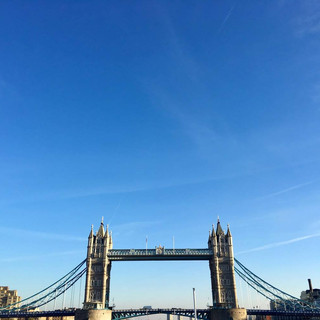A Marriage Of Past And Present
- Site Admin
- Apr 20, 2017
- 2 min read
by Meredith Wilshere
Photography by Meredith Wilshere
London is a city that is constantly building upward and outward. Its skyline is made up of historical buildings, monuments and construction cranes. It is rich in its history and filled with a diverse population, some just for the weekend and others for life. People visit London for many reasons, such as its historical significance, its artwork or its booming nightlife.
The city has a combination of modern and traditional buildings that wind along the River Thames. The contrasting styles are inviting; Janet Ellis, notable television presenter and recently published author said, “The Georgian period whispers to you, hidden behind other buildings.” Walking down the different streets of London, you can recognize the different historical periods. You can imagine the buildings that stood before the bombings of WWII. Many of the buildings still stand—symbols of resilience.
The Tate Modern, a renowned modern art museum, is housed in an old electric factory. Many of London’s buildings have been repurposed in this way. Some have been converted into office buildings, workspaces and even bars.
Walking down the streets of South Kensington takes you back in time—perhaps to a less crowded era. In a day, you can walk along the River Thames, watch the London Eye climb toward the sky, take in the art at the Tate, have high tea at Fortnum & Mason, share a pint in a pub, and catch a live music show in Brixton. London isn’t just one thing—it’s everything.
Each part of London is curated like pieces of art in a museum—separate and unique but collected together to create one fluid city. Camden serves as a testament to rock music and individuality. Its shops line the space of old horse stables. Shoreditch’s walls are laced with street art. Notting Hill serves as the memorable, colorful backdrop to the movie Notting Hill but stands in its own right, lined with coffee shops and bookstores.
Each piece of London is a pocket of history, paying homage to the artists and thinkers it used to house. The town is flooded with vintage shops and commercialized vendors. And yet, among the souvenir shops and ‘tourist traps’ in Camden, there are charming food vendors that serve as a testament to the cultures of London. The people of London pride themselves on being shopkeepers, selling products, stocks and even lifestyles. London is also notable for its tourism, averaging 17 million visitors a year.
Although London may seem trapped it in its own history, different cultures have flooded to the city and demand recognition. Because it is such a hub, the integration of other cultures is not a new phenomenon, but London currently struggles to find a balance between holding onto its own history and including others.
London pulses with its own unique heartbeat. It is rich in its history but also perhaps richer in its desire to advance—in finance, in technology and in being a cultural leader. London consistently desires to create, share and inspire.












Comments